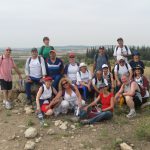For over a year now, I have been using a Garmin Forerunner 305 to track my sport orienteering exploits. I also use it to record my other sports activities — walking, hiking, cycling. My main purpose, and pleasure, in using the Garmin is to review my orienteering routes and evaluate my successes and errors.
I very quickly became disenchanted with the Garmin’s software Training Center (TC). Relying on advice from more experienced users, I began using freeware called SportTracks (ST) for storing and analyzing my GPS tracks. Both programs are training logs that allow you to save a GPS track together with information such as a speed, pace, heart rate, elevation, and so on. The two programs have similar functionality, but ST simply has better usability.
After installing ST, I also installed 2 plugins:
-
Elevation Correction: Corrects the GPS elevation of activities and routes using digital elevation models. It solved the problem of incorrect elevation data being displayed.
-
Apply Routes Plugin: Provides lots of new map types. Somehow it solved the problem of Google Map not showing up in the background of the route display.
You can see examples of my ST tracks from orienteering, hiking and biking in my Tracks set on Flickr.
Another freeware program I use occasionally is QuickRoute.
The beauty of QuickRoute is that it let’s you see your track on the actual O-map, instead of a satellite, aerial view. But the flipside is that you have to first scan the map and create an image file. Like ST and TC, QuickRoute also imports data from the Garmin directly (or from a GPX file). It also requires a bit of tweaking to get the tracks aligned with the control circles on the map.
You can see examples of QuickRoute tracks in Zef Segal’s blog and in Dan Chissick’s blog.
